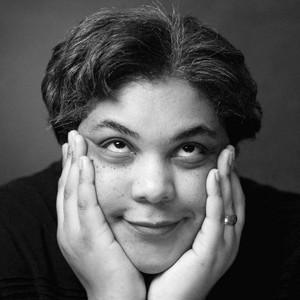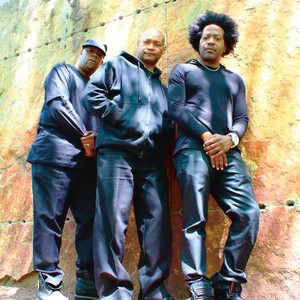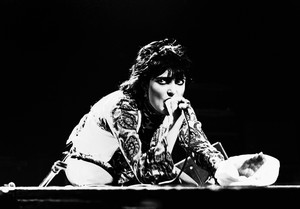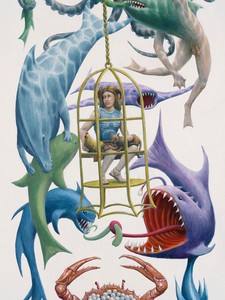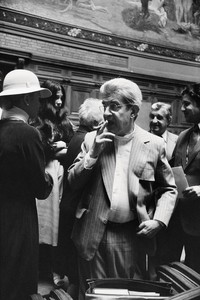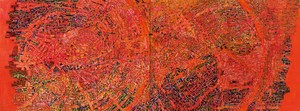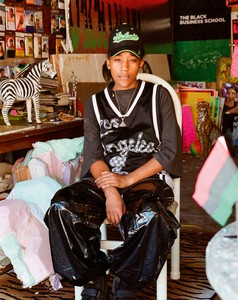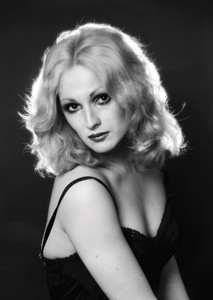Finding your way into art collecting is a lot like stumbling into an elaborate dance routine with a partner who expects you to anticipate their every move even though you are unfamiliar with the choreography. It can be awkward and far more challenging that you might imagine, but still, you want to master the steps.
My parents have been collecting Haitian art my entire life. I grew up around vibrant depictions of Haitian life and culture, mostly oil on canvas, often large in scale. My great-aunt Carmel owned a gallery in Port-au-Prince, and when we visited during the summers, she would let us roam the gallery freely, marveling at the paintings and the sculpture. But I was never exposed to the business of art. And then I got older and majored in English and eventually became a writing professor, so art collecting seemed well beyond my reach. I certainly enjoyed art in museums and galleries, but I never considered that I could own art. I understood the price points of art as either forty-dollar posters or multimillion-dollar Basquiats sold at a frenzied auction.
And then I met my wife, Debbie, who has been a collector for more than twenty years. Everywhere you look in her, now our, house, there is art, whether it’s originals or prints or interesting objects. Once we knew each other better, I asked how she built her collection, and she shared how she started with just one $500 piece that she could barely afford in the 1990s. From there she bought art she was drawn to that was within her means. Then as now, she is very distinct in her tastes. She likes experimental art and anything with typography. Sometimes, she refers to our home as “The House of Type,” because everywhere you look there is art with words demanding to be read. She prioritizes women and queer artists but has a truly diverse range of artists in her collection. There is always something interesting to look at and contemplate. As I started spending more time in our home, I was reminded of the pleasures of living with art, of a life suffused with it in a myriad ways.
My own collection started innocently enough. One evening Debbie introduced me to the website Artsy. I started browsing and a couple hours later, a monster was born. Art news! Artist features! Auctions! The very first piece I bought was (I think) Kahlil Robert Irving’s Music Memorial in Film [(Greeting Screening Chained) Daily Ritual & tribute (terror)] (2019), a collage on industrial ceramic tile. Then I started exploring other art-related sites and discovering new artists and appreciating the work they made. When we’re in New York, we live in Chelsea, so everywhere I look there are galleries and although in Los Angeles, where we also live, the galleries are a bit farther afield, the art they offer is just as urgent and exciting.
The guiding of my collection has been to find art I want to live with. Certainly, I have specific collecting interests. I’m drawn to the work of Black artists, women, LGBTQ artists, and people who live at the intersections of those identities. I love collage and mixed-media work, figurative art, textiles. And although I have these interests, I don’t limit myself. When I find something I love, and that is within my means, I try to bring it into my collection.
I’m drawn to the work of Black artists, women, LGBTQ artists, and people who live at the intersections of those identities.
When avid art collectors offer advice on building a collection, they often encourage you to buy what you love. That is indeed valuable advice, and not as simplistic as you assume. Really what they’re saying is, buy art you care about and have a connection to instead of looking at art merely as an investment or a means of accruing social capital. But there is a lot of advice that is never shared, perhaps because the advice givers assume that budding collectors already understand the way the art world works. I was rather naïve when all this started: I assumed that if something was for sale and I wanted to buy it, a simple transaction would ensue. But rarely is that the case. Many of the practices of acquiring art are . . . confounding if you’re an outsider. It can be intimidating to walk into the hushed void of an art gallery. They are, generally, spartan affairs, the better to appreciate the art within, I suppose. A young person or two dressed all in black might be working at something architectural resembling a desk. If you’re lucky, there is a small stack of reading material, and if you’re very, very lucky, there is a price list. Mostly you’re left to your own devices, particularly if you aren’t legible as an art collector.
At art fairs, held in cavernous spaces with high ceilings, you can wander from booth to booth, taking in presentations of work, sometimes from a single artist, sometimes from a selection of a gallery’s artists. There are a lot of people with chic glasses and expensive designer accessories milling about, trying to outdo one another in expressing, loudly, their opinions on what they see and how bored they are with the whole scene. And again, if you aren’t legible as a collector, you are practically invisible.
There is nothing like seeing art in person, being able to look at the craftsmanship, construction methods, brushstrokes, the texture of layers of paint on canvas, but there is also something to be said for the simplicity of looking at art online, from the comfort of wherever you are, without the awkwardness of having to navigate the social mores of the art world. Over the past few years, I have developed a real fondness for galleries that are not coy with information about the art and artists they represent. Though I generally abhor being on mailing lists, the one exception is galleries, because their emails are clear in purpose and when they send installation previews, most of the information you might be seeking is available in a handy PDF or online viewing-room.
Every community has its rules, both spoken and unspoken, and to collect art requires understanding that. Not all galleries are created equal. There are the smaller galleries and the galleries that are vanity projects and the galleries with a mission, and then there are the megagalleries, the Death Stars if you will, representing blue chip artists with branches in the world’s most glamorous cities. There are the small collectors who just want to own a piece or two of original art and there are the people who view art as an investment rather than a joy to live with, and of course there are all kinds of collectors in between.
I love art, even if I find the art world as inscrutable as it is interesting.
When it comes to buying art, not every collector pays the same price. Not every collector gets to acquire the work they covet. You can negotiate the sale price a bit, but that can be tricky, since unless the gallery absorbs the discount from its steep percentage, the artist will receive less money for their valuable labor and art. But before you even get to the negotiating stage, you have to contend with the reality that just because something is for sale does not mean you can buy it. Gallerists, generally, are representing their artists’ and their own best interest, which means they sometimes want to place that work with “important” collections or museums and other institutions.
If a gallery has no relationship with you, which seems like it would be the case most of the time, they might ask you to share more information about yourself. What they’re really seeking is a better understanding of your collection and its provenance, to see if you’re a worthy (by their arbitrary standards) steward of the work. Once, a gallerist asked me to tell her a bit more about myself. This was before I understood how things worked so I dashed off a spicy email with an extensive biography and, as you might expect, never heard back. Another time, when I wanted to buy a specific piece from an artist whose work I love, the gallery told me they reserve his pieces for customers with whom they have an ongoing relationship. They offered instead to sell me another piece of art by a different artist I didn’t know, which is to say, they wanted me to buy something I did not want in order, maybe, someday, to have the opportunity to buy a piece of art I actually did want.
By now I’ve learned that there are reasons for some of these practices. Artists understandably want some control over where their work goes and what happens to it. They want to protect their work from being sold on the secondary market too soon. They want to protect their standing in the art world. And galleries want to protect their artists, too. But in a world predicated on prestige that is also susceptible to the biases we all live with in one way or another, some collectors are dismissed out of hand. At the Frieze Los Angeles VIP preview in 2020, Los Angeles artist Genevieve Gaignard wore a beige dress with the words “sell to black collectors” emblazoned on the back. This was not an act of self-promotion; it was a way of instigating a conversation about access to art. Translating that conversation into change, though, has been elusive.
I love art, even if I find the art world as inscrutable as it is interesting. When I was approached to curate this special section of the Gagosian Quarterly, I welcomed the opportunity to shine some light on the corners of the art world I enjoy. Every piece in this section is written or curated by a Black woman and features the artwork of Black women. The talented Brooke C. Obie profiles Gio Swaby, whose Love Letter 1 (2018) was one of the first pieces I added to my collection. Over Zoom, I sat down with Calida Rawles and Jordan Casteel to talk about how they make art and make space for making art in their busy lives. The deeply intelligent writer and critic Ladi’Sasha Jones writes about Black women artists and how they use collage to reflect their understandings of the world. Chicago-based abstract artist Kellie Romany shares some of her own work in “Many Bodies Corralled.” Randa Jarrar, one of the most vibrant writers working today, explores the visual abundance of Fresno-based artist Kezia Harrell. And last but certainly not least, the amazing multihyphenate Amber J. Phillips writes about the art of Firelei Baez and Tschabalala Self and how they complicate our understandings of Black women’s bodies. This special section is a conversation, and you are invited to listen.


